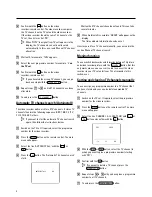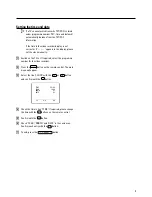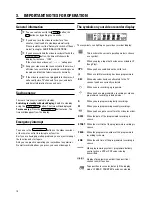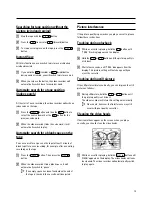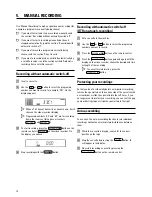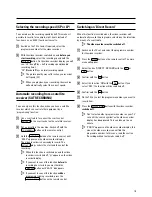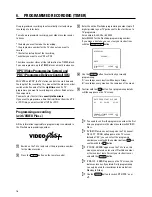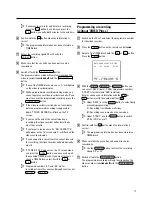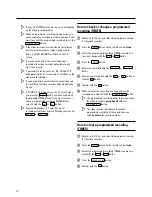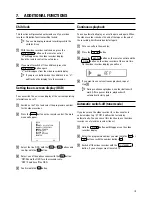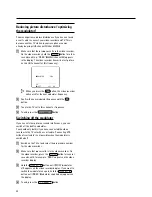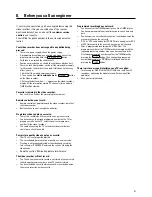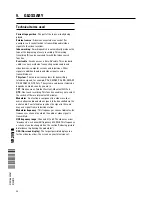
Technical terms used
Current tape position
: The part of the tape currently being
played.
External source
: A device connected via a socket (for
example, scart socket) which is transmitting audio/video
signals to the video recorder.
Index marking
: A marking which is automatically made on the
tape at the beginning of every recording. This marking
(recording ID) can be searched for with the Index search
function.
Scart cable
: Also known as a Euro-AV cable. This standard
cable is an easy method of connecting various audio and
video devices, computer screens and televisions. Other
signals in addition to audio and video signals can be
transmitted on it.
TV system
: There are various systems for transmitting
television signals, for example, PAL, SECAM, PAL BG, SECAM
DK, SECAM L/L, NTSC etc. The system used by your television
depends on which country you are in.
TXT
: Also known as Teletext, Fasttext, Videotext, FLOF etc.
OTR
: One touch recording. This function enables you to select
the switch-off time in intervals of 30 minutes.
Modulator
: An electronic component in a video recorder
which allows audio and video signals to be transmitted via the
aerial cable. Your television receives the signal in the same
way as a signal from a television station.
Modulator frequency
: This frequency or channel indicates the
frequency or channel on which the audio or video signal is
transmitted.
UHF frequency range
: Channels 21 to 69. The video recorder
’broadcasts’ on channel 35/frequency 583 MHz. This frequency
or channel can be changed. See the section ’Reducing picture
disturbance (’optimizing the modulator’).
OSD (On-screen display)
: The largest possible display area
for the video recorder - the screen on your television set.
9.
GLOSSARY
22
3103
166
23061
9134/010
VR205/05
(WwnnNNNwwnwNNnwnWwnNwwNNnNwwnN)

